John W. Garbutt, 2019
I have always disliked the end of the year and the subsequent arrival of spring. I like fall and winter. Time seems to slow down from October through December until the last week of the year. Then the next few months seem to go quickly. Perhaps this is some deeper psychological problem for those born on January 1st, which could only be understood after a call to Dr. Crane.
Birding has slowly, secretly, made me long for the change in seasons.
By late February, the quietness of winter begins to fade; as the House Finches and Cardinals become more vocal in the tree next to my balcony.
As the calendar turns to March, I ponder the first spring arrivals. It usually occurs on the way to work, I roll down the window and check the power line before pulling onto the road. There is a familiar sound, a Barn Swallow, the harbinger of spring in North Texas.
On my final visits to the duck pond, a Northern rough-Winged Swallow or Purple Martin calls and I look up and track them as they skim over the water for insects.
As I arrive at work, I hear a familiar call, a Scissor-tailed Flycatcher passes overhead, another first of the season. The dawn chorus has become louder and longer.
As the sun warms my back from the chilly remnants of winter, the year-round resident birds are in full song. They court. They chase. They begin nesting.
The ear hears something, temporarily unable to place the notes. The wintering birds are now “practicing” their songs for their breeding grounds. The Juncos, Ruby-crowned Kinglets, Lincoln’s Sparrows, and White-throated Sparrows add their voices. We are only admitted to the amphitheater with walls of green to witness these performances for the briefest moments. By the time I think I have learned the players and the songs, they are gone.
The leaves are making it more difficult to see. I raise my binoculars on the chickadees and titmice, so hopefully, my eyes are quick and ready for the northern-bound arrivals in a few weeks. I check the Cooper’s Hawk and Yellow-crowned Night-Heron nests while keeping my ears ready for those first and final notes of a seasonal crossover.
Then one morning, a White-eyed Vireo sings out. It is a song synonymous with the warmth that awaits. Soon, warblers, vireos, tanagers, and thrushes will make passage through the area on their way to destinations afar.
By late April, the wooded areas are filled with the sound of Swainson’s thrushes, the aroma of honeysuckle and spring. The sun breaking through the canopy highlights the insects and cottonwood shedding, creating a glistening scene at golden hour.
Other new songs and calls join the thrushes. I try to learn them but they are soon gone. When will spring come again?
These are some of the sights during this time.
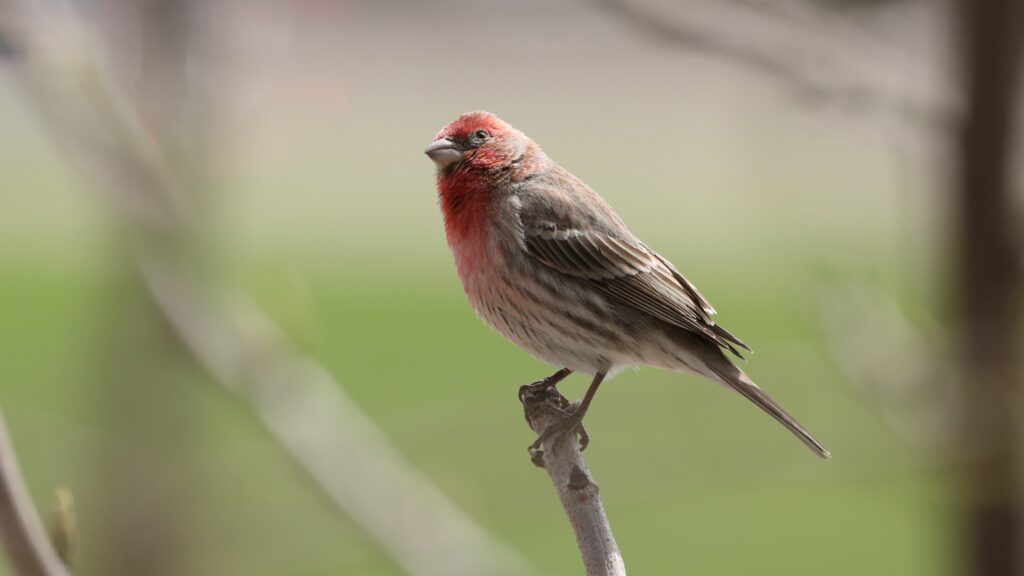
For me, the House Finches are the first noticeable change in the soundtrack of the seasons.
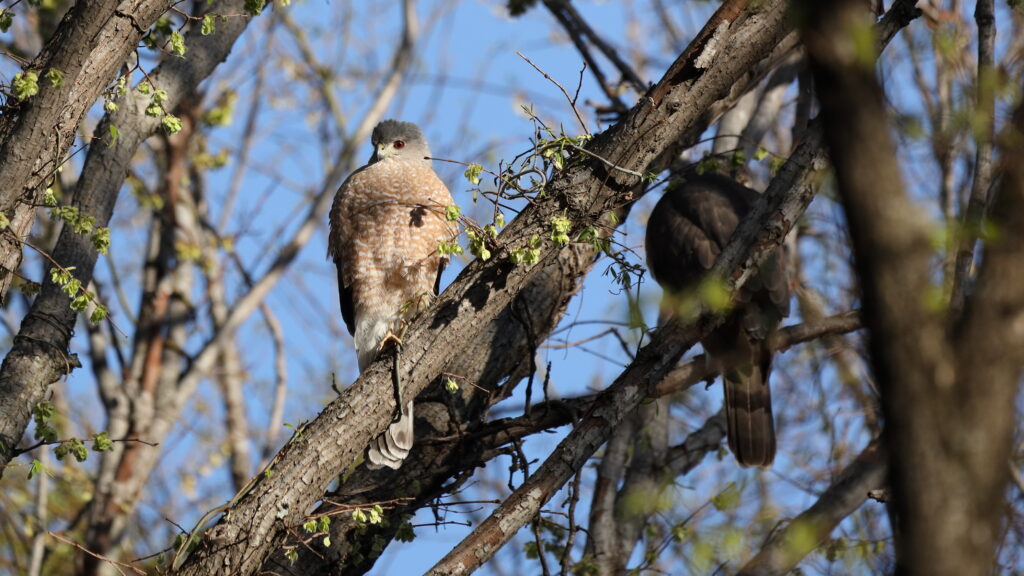
Once March arrives, I focus on finding the Cooper’s Hawks nest site while the trees are still bare. I hear a different call and track them. It’s a courtship call. They are now spending time together. It took a few weeks to discover that they were reusing last year’s nest.
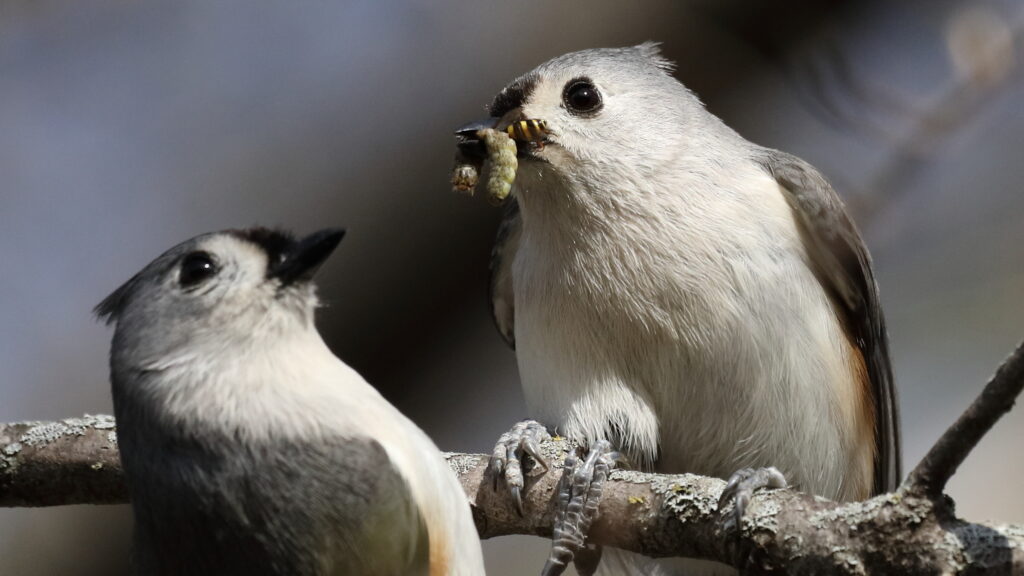
Mixed flocks of Carolina Chickadees and Tufted Titmice add their vocals to the growing spring chorus. I was able to observe the titmice engaged in wing-quivering and mate-feeding. The female calls and vibrates her wings and the male arrives with food. Soon their offspring will be doing the same.
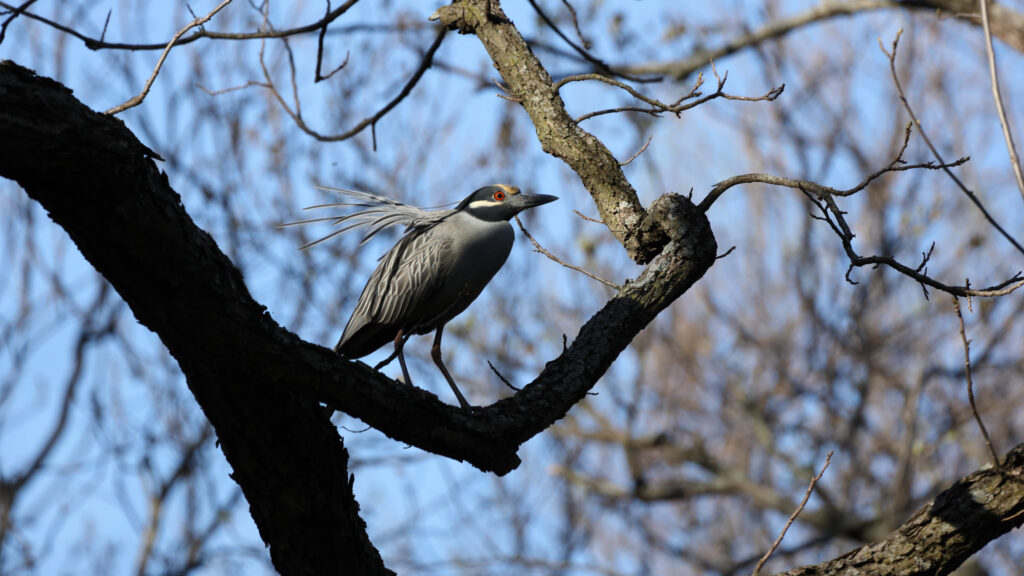
I found my first Yellow-crowned Night-Herons of the season, not on the shoreline but up in the trees. They were in the process of reinforcing last year’s nest. While observing their courtship and nest building, I found two additional pairs!
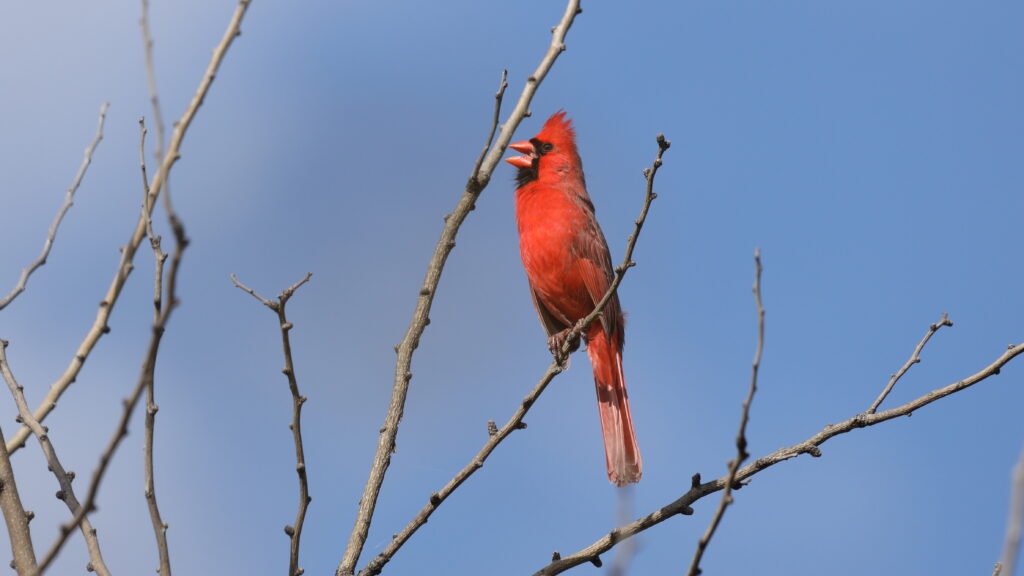
One of the earliest birds to increase their singing in late winter.
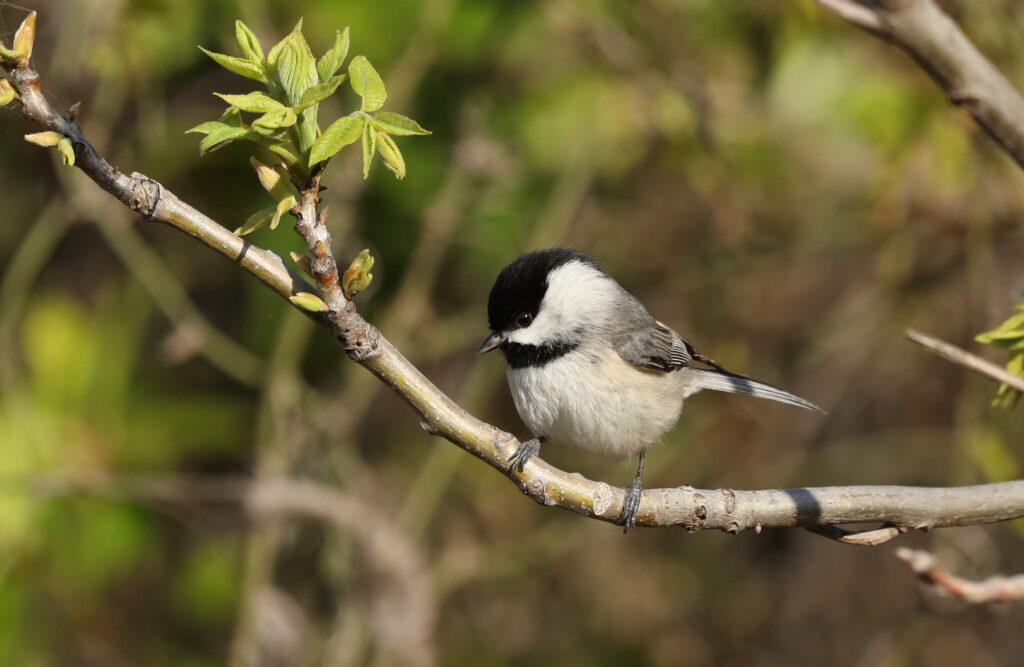
As the Carolina Chickadees made their way toward me along the edge habitat, one began flying eye level toward me then veered up into a tree at the last moment.
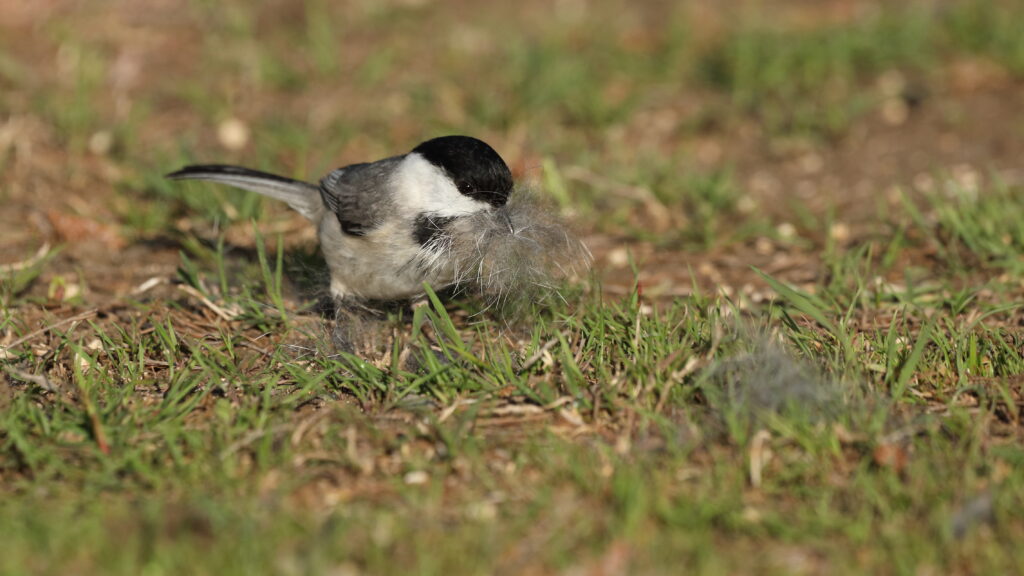
It then swooped down to the ground. I then realized she had been wanting to grab the rabbit fur from the ground to line her nest.
(11- Cooper’s Hawk)
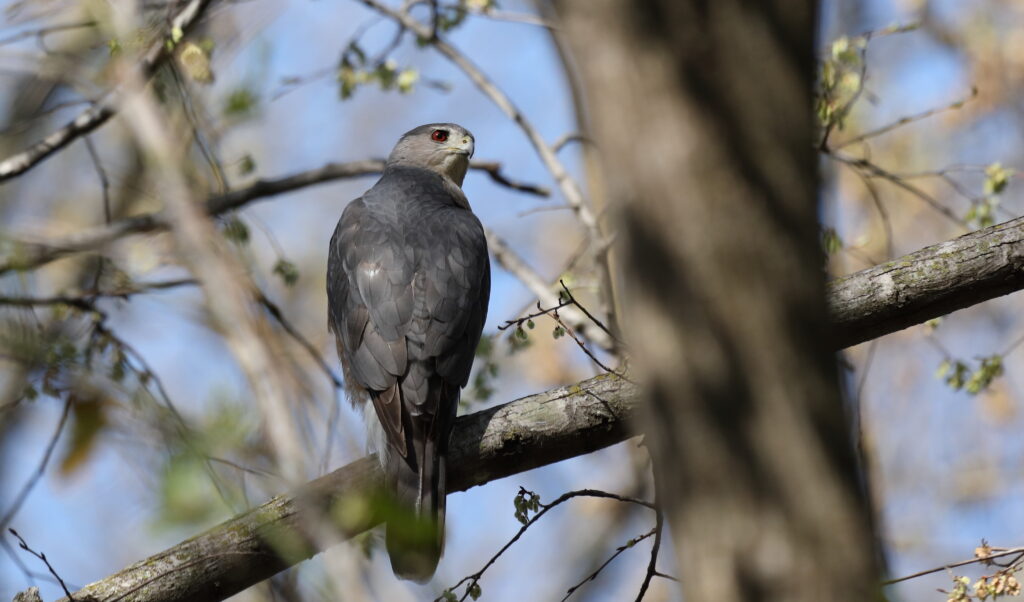
Toward the end of March, the Cooper’s Hawks were adding the finishing touches to the refurbishment of the nest. Incubation was first documented on April 2nd. The male who was adding the final branches to the nest on this day.
(12- White-eyed Vireo)

Step into the woods in early April, and close your eyes. Hear the White-eyed Vireo, smell the honeysuckle. Your senses are telling you that spring is here.

Scissor-tailed Flycatcher with its catch.



